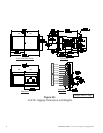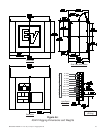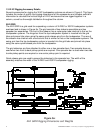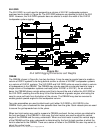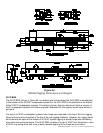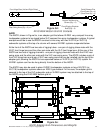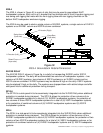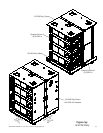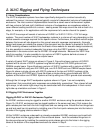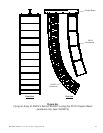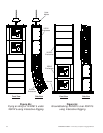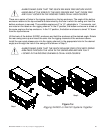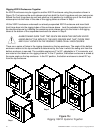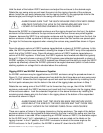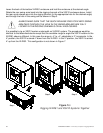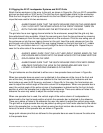
ELECTRO-VOICE
®
X-Line Very Compact
TM
Rigging Manual
2. XLVC Rigging and Flying Techniques
2.1 Array Considerations
The XLVC loudspeaker systems have been specifically designed to construct acoustically
coherant line-arrays. Line-array systems typically consist of independent columns of loudspeaker
enclosures. The most common implementation would be a stereo sound reinforcement system
with two columns (left and right). Additional columns of loudspeakers are sometimes added to
cover different seating sections of a venue – seating areas that wrap around the side or back of a
stage, for example, or for applications with the requirement of a center channel for speech.
The XLVC line arrays will consist of columns of XLD281 or XLE181 120°H x 10°V full-range
systems. The exact number of XLVC loudspeaker systems in a column will vary depending on the
vertical acoustic coverage required for the specific venue. Furthermore, the relative vertical angles
between the boxes will also depend on the venue’s acoustic coverage requirements. (Acoustic
design techniques are outside the scope of this document and the reader is directed to the XLVC
LAPS modeling software available from the Electro-Voice website for acoustic design assistance.)
It is also possible to construct subwoofer line arrays using the XS212 systems, or implement
subwoofers in the same column as the XLD281 full-range elements. Because the XS212 has
side-firing woofers, it is also possible to rig a column of XS212 systems behind columns of
XLD281 or XLE181 systems using the coupler beam.
A variety of typical XLVC arrays are shown in Figure 6. Figure 6a shows a column of XLD281
systems with a column of XS212 systems hung behind using two XLD GRID grids and one
CBEAM coupler beam. Figure 6b shows a column of XLE181 systems with a column of XS212
systems hung behind using one XLE GRID grid, one XLD GRID and one CBEAM coupler beam.
Figure 6c shows a single column with XS212 systems at the top and XLD281 systems at the
bottom using one XLD GRID grid. Figure 6d shows a single-column ground stack with XS212
systems at the bottom and XLD281 systems at the top using one XGS-4 ground-stack assembly.
Although the full-range XLVC loudspeaker systems shown in Figure 1 are not completely
symmetrical, their acoustical polar responses are substantially symmetrical. Thus, stereo left and
right arrays, or left-center-right arrays may be constructed with the loudspeakers in their normal
right-side-up orientation as shown in Figure 1.
2.2 Rigging XLVC Enclosures Together
Rigging XLD281 or XLE181 Enclosures Together
An XLD281 enclosure may be rigged to another XLD281 enclosure using the procedure shown in
Figure 7a. (XLE181 enclosures may be rigged together in the same exact way.) First remove the
quick-release pins from both the front hinge bars and rear swing arms. Extend the front hinge bars
up and lock each bar into position by installing one of the front quick-release pins into the holes in
the side of the rigging tubes as shown in Step 1.
Lift the XLD281 enclosure underneath an already-suspended XLD281 enclosure and insert both
front hinge bars into the rigging tubes of the enclosure above. Lock the extended hinge bars in
the above enclosure by installing the remaining quick-release pins into the holes in the rigging
tubes at the bottom of the suspended enclosure as shown in Step 2.
17



